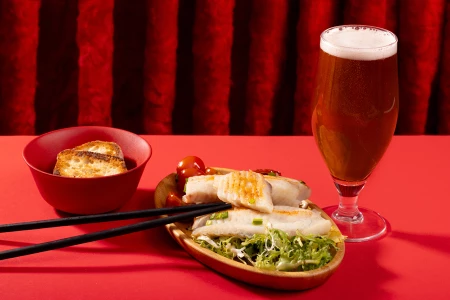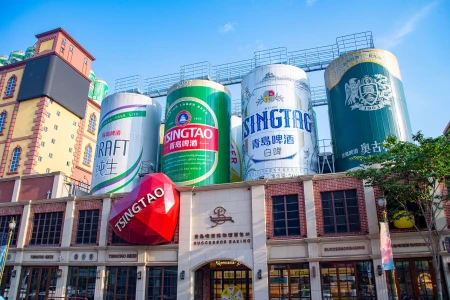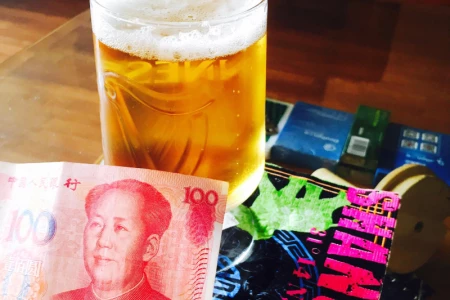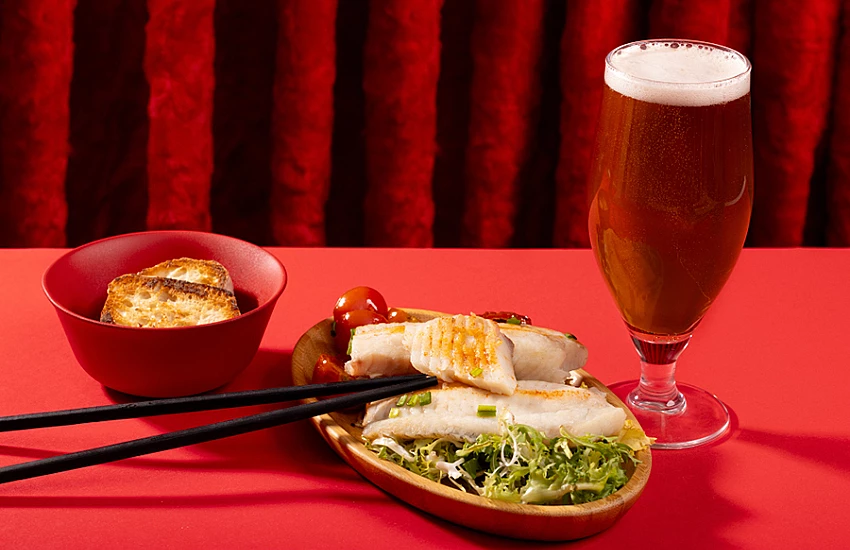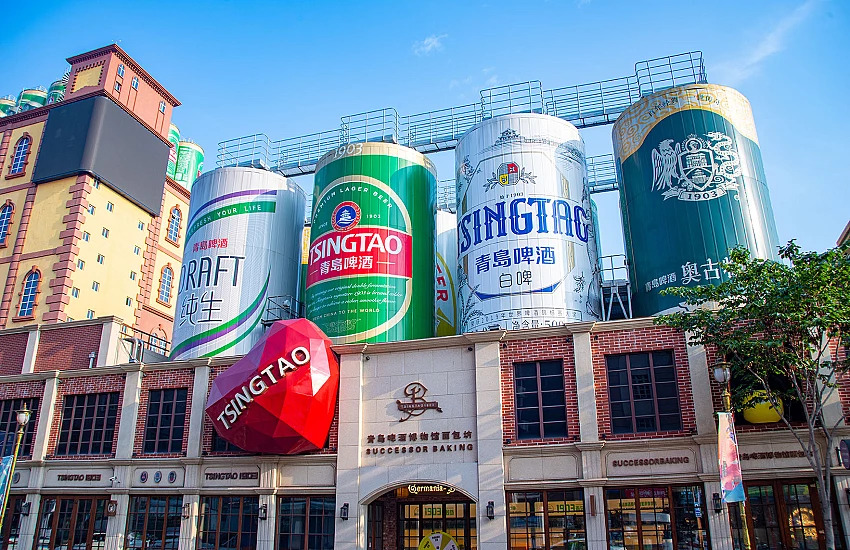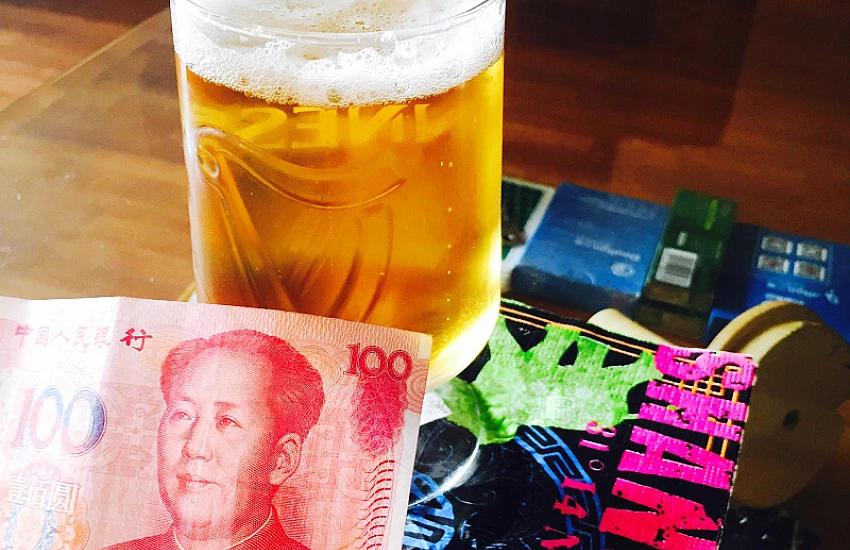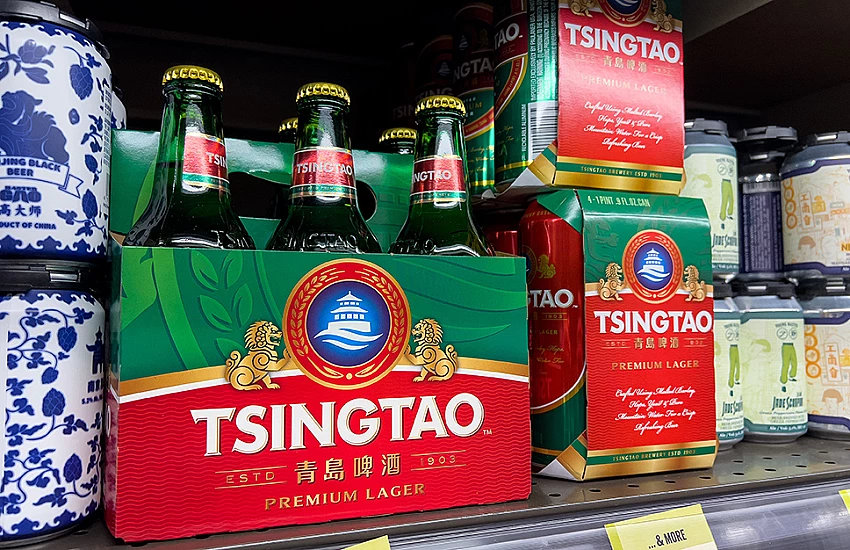
Table des matières
The origins of Tsingtao Beer trace back to the early 20th century when Qingdao, a port city on the eastern coast of China, was under German colonial rule. The year was 1903, and a group of German settlers and entrepreneurs saw an opportunity to bring their brewing traditions to the Far East. They established the Germania-Brauerei (German Brewery) with the intent of producing high-quality beer that would cater not only to the European expatriates but also introduce local Chinese consumers to this cherished aspect of German culture.
The choice of Qingdao was strategic; its pristine coastal waters and favorable climate provided ideal conditions for brewing. The Germans transported state-of-the-art brewing equipment from their homeland and imported key ingredients such as hops and barley from Europe, while utilizing local water sources renowned for their purity. This combination resulted in a lager that retained authentic German qualities yet had a unique character imbued by its Chinese environment.
Initially named "Tsingtao Brewery Co., Ltd." after its founding city, Tsingtao Beer quickly gained popularity among both foreigners and locals. The brewery adhered strictly to Reinheitsgebot, or the German Beer Purity Law, ensuring that only water, malt, hops, and yeast were used in production. This commitment to quality set Tsingtao apart from other beers available in China at that time. Despite geopolitical upheavals—including Japan's occupation during World War I—Tsingtao Beer continued to thrive.
It became more than just a beverage; it evolved into a symbol of cultural exchange between East and West.
Growth And Expansion: Tsingtao In The Early 20Th Century
In the early 20th century, Tsingtao Beer began its journey from a modest brewery to becoming an iconic brand synonymous with Chinese lager. The brewery was established in 1903 by German settlers in the port city of Qingdao, then a German concession. Leveraging their brewing expertise, the founders combined traditional German brewing techniques with pristine local ingredients, including spring water from Laoshan Mountain and high-quality barley and hops.
This fusion resulted in a distinct beer that quickly gained popularity both locally and internationally. As Qingdao grew into a bustling trade hub due to its strategic location along China's eastern seaboard, Tsingtao Beer found itself perfectly positioned to tap into expanding markets. The city's vibrant mix of cultures and increasing foreign presence provided fertile ground for Tsingtao's growth. By the 1920s, just two decades after its inception, Tsingtao had already begun exporting its lager to other parts of Asia and Europe.
The company's early success can be attributed not only to the quality of its beer but also to savvy business practices. Embracing modern marketing strategies for that era, Tsingtao promoted itself through various media outlets and sponsorships at international expositions. This exposure helped solidify its reputation as a premium product. As China navigated through political upheavals and economic transformations in the early 20th century, Tsingtao managed to maintain steady growth by adapting to changing circumstances while retaining its commitment to quality.
The Impact Of Wars And Political Change On Tsingtao Brewery
The history of Tsingtao Brewery is deeply intertwined with the tumultuous events that have shaped modern China, including wars and significant political changes. Established in 1903 by German settlers in the coastal city of Qingdao, Tsingtao began as a product of colonial ambition. However, its journey has been anything but straightforward. World War I marked the first major upheaval for Tsingtao Brewery.
In 1914, Japanese forces seized Qingdao from Germany, and with it, control over the brewery. This occupation introduced new management practices and expanded distribution networks within Asia, contributing to Tsingtao's growing reputation. The end of World War II saw another shift as Chinese nationalist forces regained control from Japan. The brewery's operations were briefly stabilized until the Chinese Civil War culminated in 1949 with the establishment of the People’s Republic of China under Communist rule.
The new government nationalized many industries, including Tsingtao Brewery. Although this period was marked by tight state control and limited resources, it also laid the groundwork for future expansion by integrating local raw materials and labor into its production processes. Reform and opening-up policies initiated by Deng Xiaoping in the late 1970s heralded a new era for Tsingtao Brewery. Privatization efforts allowed for increased foreign investment and technological advancements.
By embracing both its historical legacy and modern innovations, Tsingtao was able to expand globally while maintaining strong domestic market presence.
Global Recognition: Tsingtao Lager's International Success
Tsingtao Beer, founded in 1903 by German settlers in the coastal city of Qingdao, has evolved from a local brew to an internationally acclaimed lager. Its global recognition is a testament to both its unique flavor profile and strategic international marketing efforts. Initially, Tsingtao's journey beyond China's borders was facilitated by Chinese immigrants who carried the taste of home with them.
Over time, this organic spread was supplemented by deliberate export strategies that positioned Tsingtao as a premium choice among global consumers. The beer’s distinct taste—a harmonious blend of high-quality hops, barley, and pristine Laoshan mineral water—quickly captured the palates of beer enthusiasts worldwide. In 1972, Tsingtao made its first significant foray into the American market following President Nixon's historic visit to China.
This moment marked a turning point as it introduced Western audiences not just to Chinese culture but also to its brewing craftsmanship. Strategically aligning itself with major international events further bolstered Tsingtao’s reputation. Sponsorships of global sporting events and partnerships with renowned restaurants helped embed the brand within diverse cultural contexts. In particular, Tsingtao's presence at culinary festivals underscored its versatility in pairing with various cuisines—a quality that resonated deeply with food lovers.
Today, Tsingtao Beer is available in over 90 countries and regions worldwide. Its accolades include numerous awards at prestigious competitions such as the World Beer Championships.
Innovations And Sustainability: Tsingtao In The Modern Era
In the modern era, Tsingtao Beer has not only maintained its position as China's most beloved lager but has also embraced innovations and sustainability practices that align with contemporary demands. As global consciousness shifts towards environmental responsibility and technological advancement, Tsingtao has adeptly navigated these currents to stay relevant and respected.
One of the significant strides Tsingtao has made in recent years is the implementation of cutting-edge brewing technologies that enhance efficiency while maintaining the beer's hallmark quality. State-of-the-art brewing facilities now utilize advanced automation and monitoring systems, ensuring consistency in every bottle. This meticulous control over the brewing process minimizes waste and optimizes resource use, reflecting Tsingtao's commitment to both excellence and environmental stewardship.
Sustainability initiatives are at the forefront of Tsingtao's corporate strategy. The company has adopted comprehensive measures to reduce its carbon footprint, including energy-efficient brewing techniques and renewable energy sources like solar power for its operations. Water conservation is another critical focus area; innovative recycling systems have been installed to treat wastewater from the brewing process, allowing it to be reused or safely returned to local water bodies.
Moreover, Tsingtao actively engages in community-oriented projects aimed at promoting environmental awareness. Through collaborations with local governments and NGOs, they sponsor programs that educate on sustainable practices both within the industry and among consumers.
By intertwining innovation with a robust sustainability ethos, Tsingtao Beer not only honors its rich legacy but also ensures it remains a forward-thinking leader in a rapidly evolving global market.
Tsingtao Today: Cultural Significance And Consumption Trends
Tsingtao Beer, with its storied history dating back to 1903, has evolved into more than just a beverage; it is an emblem of cultural identity and pride in contemporary China. Today, Tsingtao Beer enjoys a unique status as both a national treasure and an international ambassador of Chinese craftsmanship. In urban centers and rural areas alike, the beer is omnipresent at social gatherings, family celebrations, and festive occasions.
Its distinctive green bottle has become an iconic symbol in the landscape of Chinese consumer products. The cultural significance of Tsingtao extends beyond its domestic borders. As China opened up to global markets, Tsingtao became one of the first Chinese brands to gain international recognition. This global presence not only bolstered the brand's prestige but also served as a source of national pride for many Chinese citizens who saw their local product succeed on the world stage.
In terms of consumption trends, Tsingtao has adeptly navigated the shifting preferences in China’s burgeoning middle class. The brand has expanded its product range to include premium lines and craft-style beers that cater to discerning palates seeking variety beyond traditional lagers. Simultaneously, its affordability ensures that it remains accessible to a broad demographic. Moreover, Tsingtao's marketing strategies have increasingly embraced digital platforms and social media to engage younger consumers.
Campaigns often highlight themes of tradition meeting modernity—a nod to its historical roots while appealing to contemporary tastes.






